My fascination with towns that don’t exist began when I hitchhiked to Alaska in 1988 and spent that summer living feral in a place called the “Cove”—a patch of forest outside the town of Cordova. About 80 people squatted there—college students, hitchhikers, a drunken gold miner, a legendary survivalist named Gene who hadn’t washed himself in years—in a smattering of tents, trailers and scrap-wood cabins. There were no utilities or services of any kind. It was a crude and difficult life filled with almost limitless freedom. We worked long hours in the canneries and spent our off-time kicking it in camp around smoky fires, exploring back roads and eating hot meals at the restaurants in town. It was an experience I’ll never forget.
Shortly after that adventure I dreamt about an imaginary town that lay beyond the Cove, farther out in the Alaskan wilderness—an abandoned logging camp, only accessible by long trek through uncharted forest. It had no name and appeared on no map. Somehow, an assortment of people—travelers, mountain men, hunters, outlaws—found their way there and shored up the decaying structures and lived in them for a season, far from the land of men and machines. The sense of mystery and freedom that dream evoked haunts me to this day.
So I suppose it’s no accident that 25 years later, in the spring of 2013, I wound up at Uranium Springs.
The ruins at the end of the world
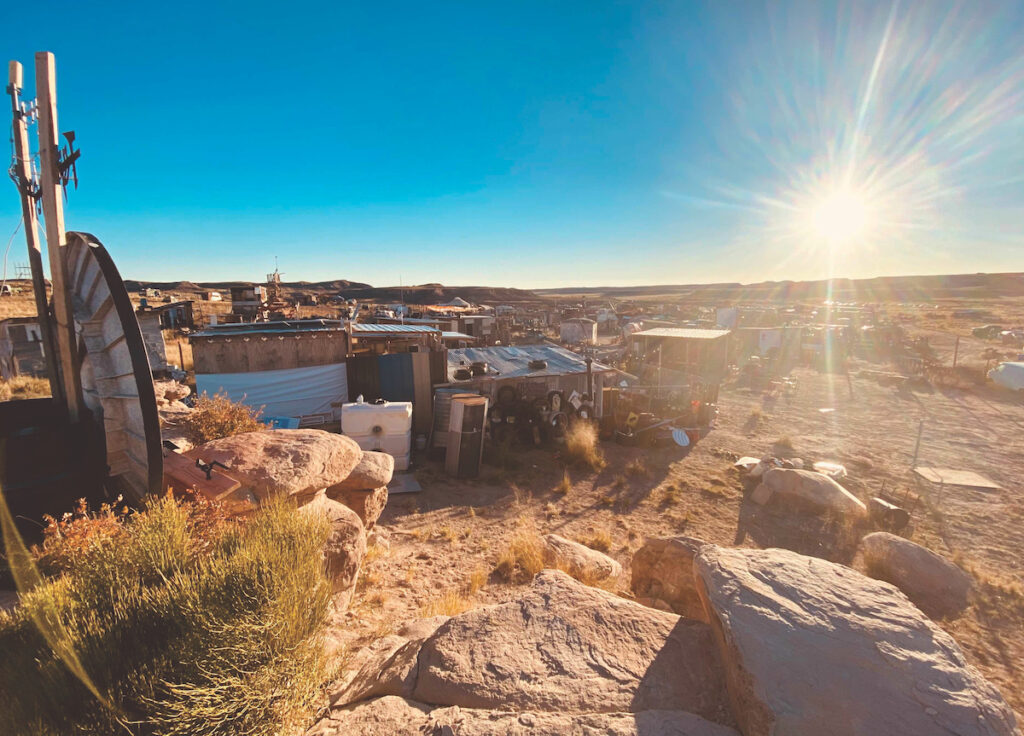
People are drawn to Uranium Springs for their individual reasons, though everyone arrives for the same event: Detonation, the annual week-long post-apocalyptic festival usually held there in May. What is a post-apocalyptic festival? Think: a heavy metal Burning Man … for the Mad Max set.
Gage Laykin bought his first ticket to Det on impulse, because he needed a change in his life. The Yard Hobo was invited by site-owner and event-founder Rev’rend Lawless, a gaming friend. Mayonegative heard about it through her friend, Tumbelina, via the Santa Fe underground grapevine. Many people catch wind of it through their association with Wasteland Weekend, the Hollywood-sized post-apocalyptic mega-event held in Southern California’s Mojave desert each fall.
I discovered Uranium Springs, and Det, by googling “post apocalyptic events” back in 2013. Something about the event website—something besides the name Uranium Springs—grabbed my attention: the $10 portage fee for crossing the “possibly flooded wash” on the drive in. Really, in the middle of the desert? Was that a lark? The question gnawed at me. I had to know.
I took a chance on the 15-hour drive from the Bay Area and encountered a group of uniquely talented creatives gathered on a 40-acre spread of privately owned land in Arizona’s Painted Desert. A mutual love for the Mad Max movies and the Fallout games formed the basis for our shared post-apocalyptic passion.
The experience was so fun and inspiring that I and others kept going back, and more people arrived every year, and what began as a small annual festival evolved into something more. The number of attendees grew from 60 my first year, to 400-plus last October. The number of festival events kept increasing, too, and now includes mini-dune buggy races, burlesque shows by the Molotov Mollies, vehicle parades of Road Warrior-esque cars and trucks, nightly feasts, karaoke, costume contests, talent shows and more.
Attendees earn “wasteland” names, and whatsmore, tribes develop naturally, among friends and associates who meet at Uranium Springs and sometimes only ever see each other there. The kicker: Each tribe may claim a 50-foot-by-50-foot piece of vacant land on site and build a permanent, theme-appropriate camp on it. In this way Uranium Springs continues to evolve from a bare meadow into a town—a town of shotgun shacks, rickety walls, stick fences and flimsy tents all made from, in Laykin’s words, “scavenged or reclaimed building material, or upcycled objects that would have otherwise headed to the scrap yard.”
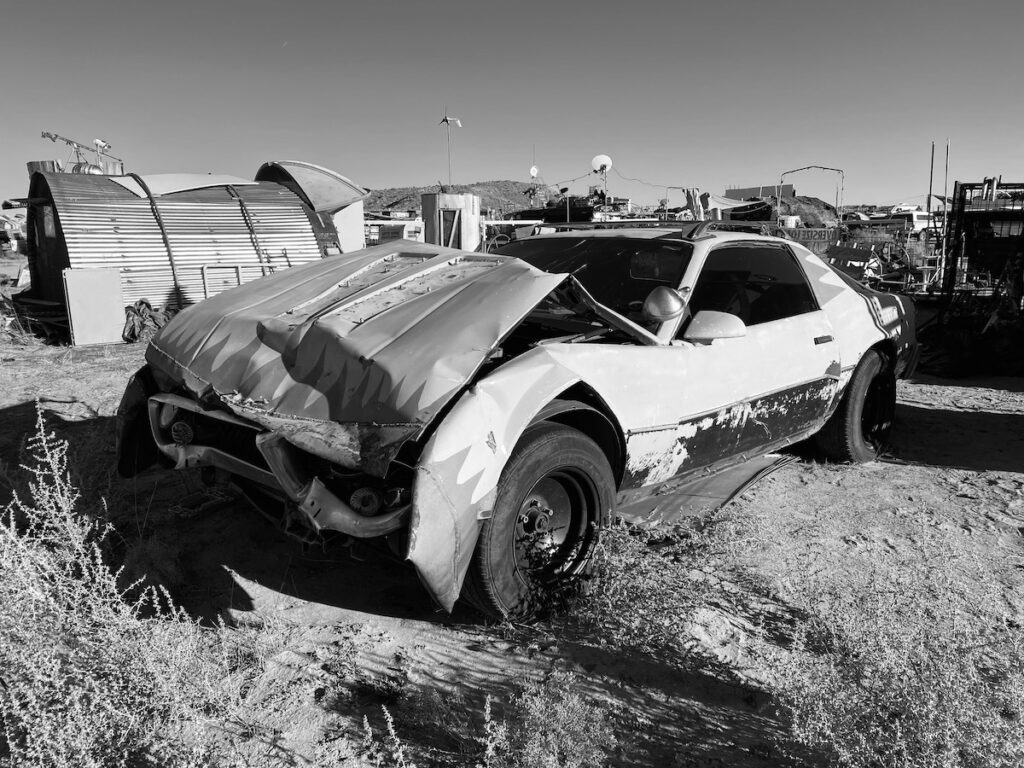
The remote town, located 40 minutes from pavement and not found on any map, has a distinctly Wild West feel to it … in spite of the presence of black leather, dune buggies and smoke-spitting feral hot rods.
Some attendees, including 9 Yards, who hails from Colorado, love it for its isolation. “It really lets you believe you’re living in an apocalypse,” he says. “You start to get to know everyone, and it truly feels like a gathering of family.”
Mayonegative keeps coming back for logistical reasons. “I and my tribemates have a permanent camp there, so it’s easy for me to just jump in my truck with some food, water and my kit, and head out,” she says. “I have made some very close friends who are also Uranium Springs regulars, and I know that I will be in good company.” In fact, her musically gifted child, Pipes, is a well-loved regular at the festival.
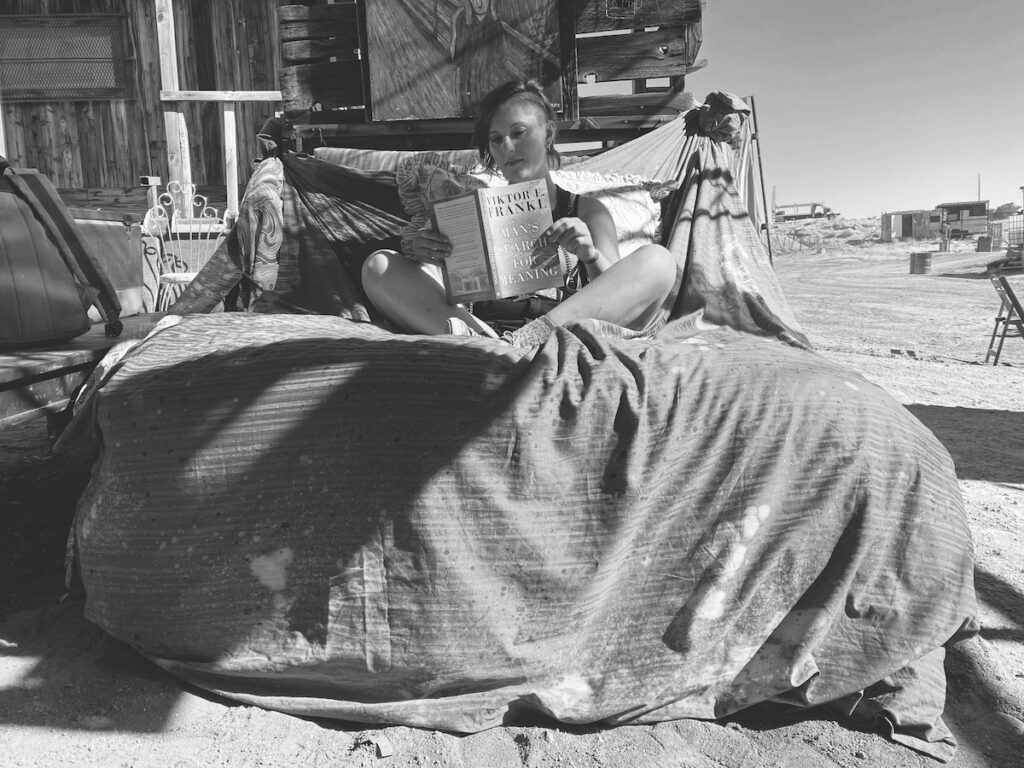
For me, the draw is in the freedom the place exudes, as presaged by my dream back in ’88. At Uranium Springs I show up, hug my fellow tribemates at the Machine Army camp—we are the friendliest cannibal biker gang ever to grace the wastes—and spend the week fraternizing with friends old and new, drinking cold beer in the dust, riding my Outlaw 70 dirt bike on exploratory missions down the wash and hanging out at the free lounge, the Wreck Room.
What a cannibal general wears
Another dream, this one from 11 years ago, shortly before I first heard about post-apocalyptic festivals: I was in the forest in Santa Cruz. A “tribe” of young people were camped there, milling around cooking fires. I felt a strong sense of belonging as I walked among them. Their clothing caught my attention—it seemed leathery and vaguely Ren Faire, but more modern, perhaps a bit dangerous. Some people wore black biker jackets. Some carried knives.
A portent, that dream, for costumery is of the utmost importance at Uranium Springs, and not just because festival rules require it. In a landscape as stark as the desert, clothing tells a story.
Laykin’s outfit, consisting of patched clothing and a leather helmet with handmade aluminum goggles, oozes a distinct future-tribal air, while 9 Yards’ well-weathered Eastern European battle suit evokes his retro-future Slavic wasteland persona. The good Rev’rend Lawless, draped in a duster and leather cowboy hat, exudes the countenance of a mythical gunfighter.
My own battle jacket—a 50-cent yard-sale score—is festooned with 20 pounds of knives, bullets, beads, hooks, ammo pouches, V8-can grenades, a coyote skull, a Grateful Dead patch, a replica World War II-era Liberator pistol and my mother’s tarnished, circa-1937 Christening cup. The exceedingly heavy war garment clanks dreadfully and commands the undivided attention of all who encounter it. I once walked into my parent’s family-packed living room wearing it and after several moments of pin-drop silence, my 4-year-old nephew simply shouted, “NO!” But wasteland reactions are more positive. Fellow revelers often stop to ogle it, and, to be blunt, the ladies like it.
And yet, more is not always better. Beetle wears thong underwear—exclusively—at Uranium Springs. The Yard Hobo often wears only a thick coating of mud. And many a young—or old, I don’t mean to be ageist—damsel—or mansel, I don’t mean to be genderist—leaves large-ish quantities of bare flesh exposed while sporting minimalist punk garments.
The ferals
This past year, Det was postponed due to Covid, and took place over Halloween weekend. One day during the revelries, General Car Killer—that is, myself—crossed paths with young first-timer Bradley Messmer, of Denver. I invited him on a desert run and we set off down the wash, he on his out-of-the-box Kawasaki 110 and me on my Outlaw 70. I took the lead, and for 40 minutes we wound our way between bushes and over sandy berms at top speed—25mph—in a loop down to the Interstate and back.
On the way back, young Messmer hit a large bump and crashed in a spectacular shower of sand. My God, I thought. What have I done? After removing his helmet and checking his skull and torn clothes for blood and protruding bones, we rode back to camp, where Medical kept him under observation until they deemed him healthy. Messmer’s crash gained him immediate celebrity, and earned him a wasteland name, Sandbar, as well as honorary membership in my tribe, Machine Army.
Thus is notoriety achieved in the wastes.
Another day, while talking to Laykin about this very article, he seized upon the idea of setting me up as a gonzo reporter in an office at his camp, replete with my own typewriter. An electric typewriter. “I’ll have to hook it up to a generator to get you power,” he mused. The creative genius of writing daily wasteland missives on an antique, generator-powered typewriter, from a quonset hut in the Annex, and then nailing the hardcopies to a pole for public viewing while also uploading digital photographs of the originals to social media, was not lost on me.
Thus are ideas hatched in the wastes.
Endgame
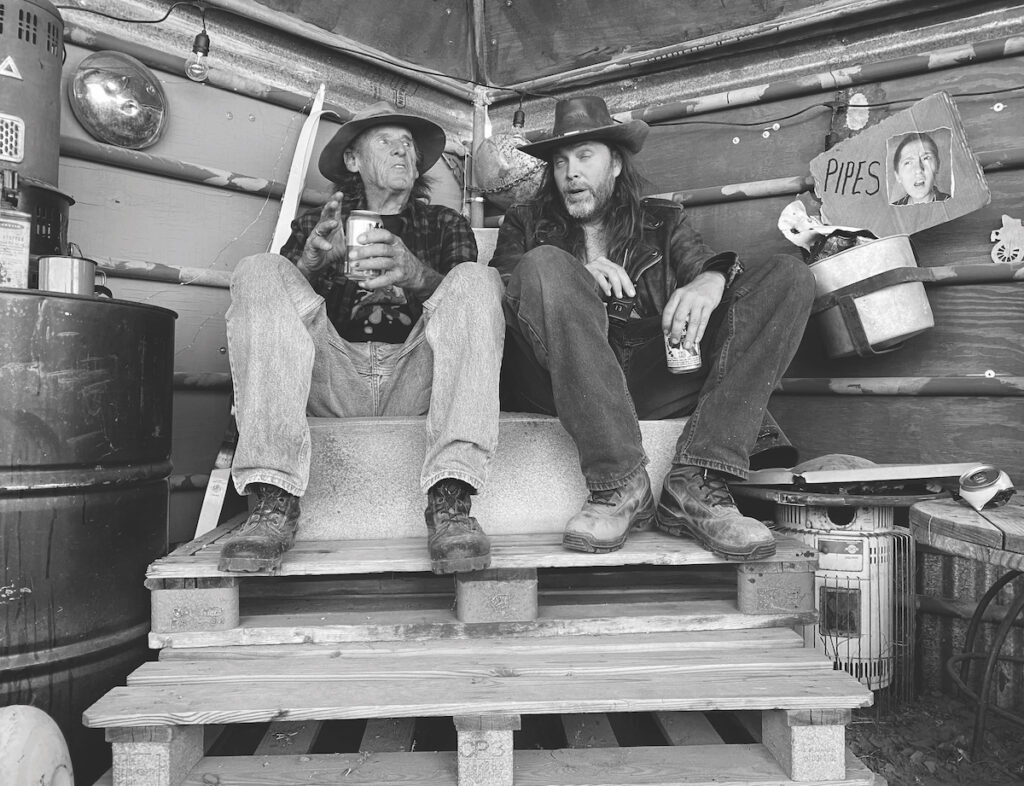
Every Det brings with it new excitement in the town that doesn’t exist. Our wasteland family plans for it for months, and some of us make the trek from as far away as Texas or California. Some adventures are written for the world to know, while others stay hush-hush in the wastes.
I always leave Uranium Springs with mixed emotions—eager to return to my home in the North Bay; but already missing my dirt family. There’s nothing mixed about my exhaustion, however. The trek wrecks me for a week.
And the portage fee for crossing the “possibly flooded wash” into Uranium Springs? It’s real. The wash can—and does—flood. But to my knowledge no one’s ever paid the fee. People just plow through the water in their 4x4s … or sit back and enjoy the wasteland until the water recedes.
For information about Detonation, visit www.detonation.us. For the author’s two prior articles about Uranium Springs, visit https://tinyurl.com/57pvnb9c and https://tinyurl.com/mr2dz66s.

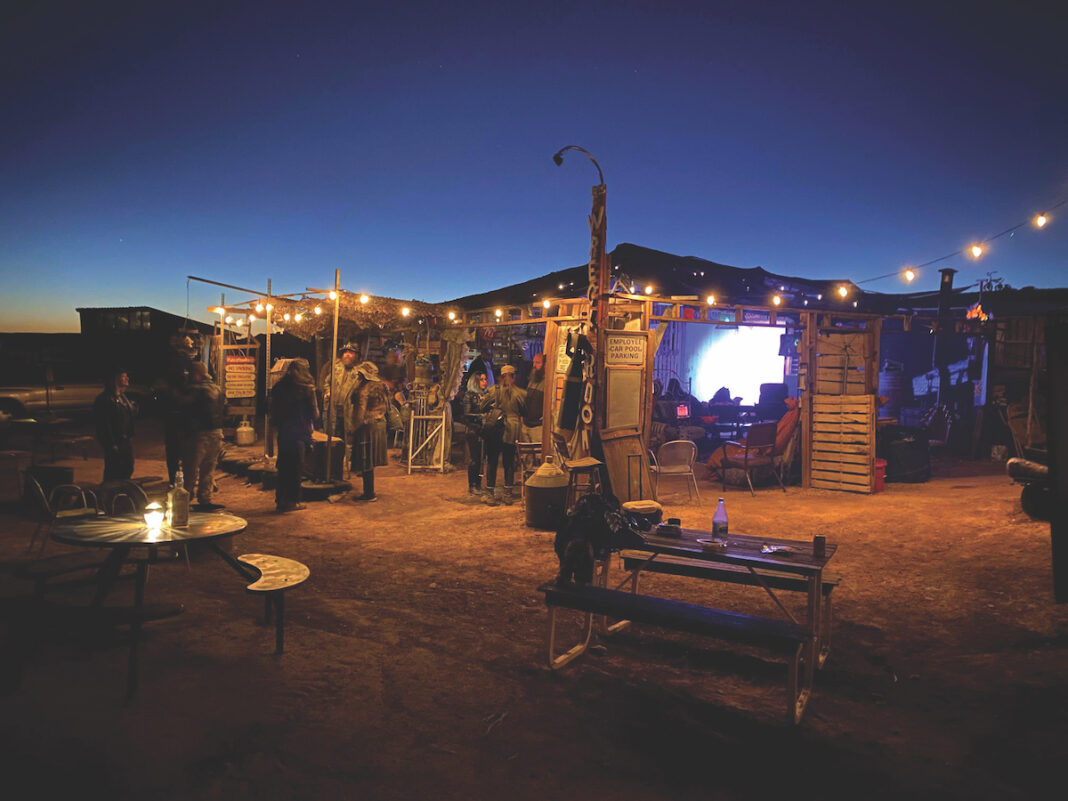







<3